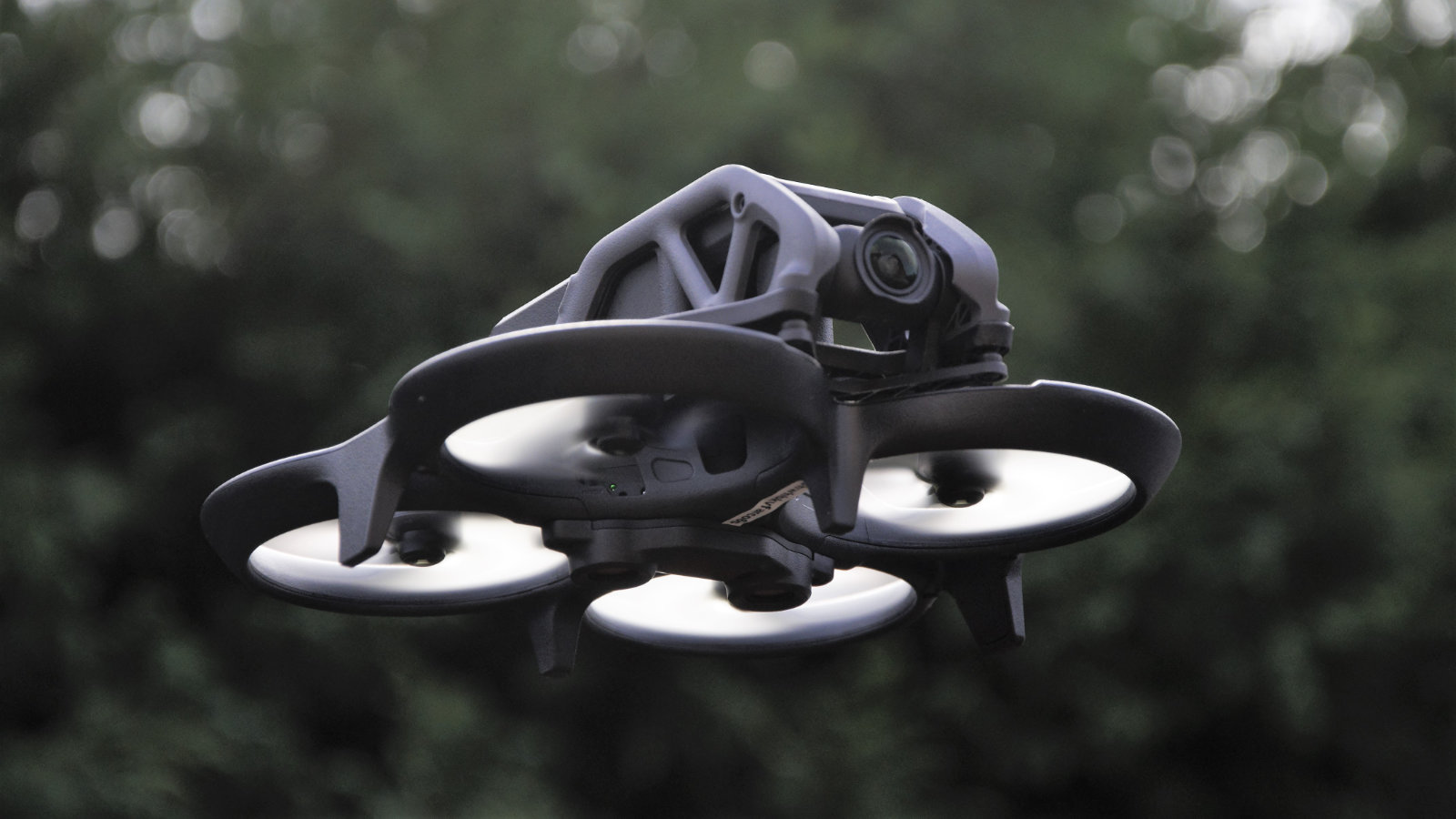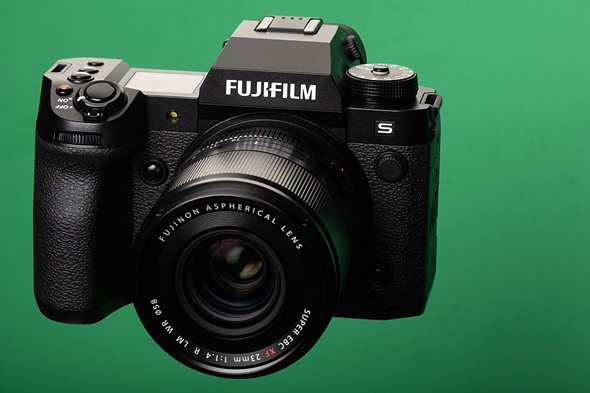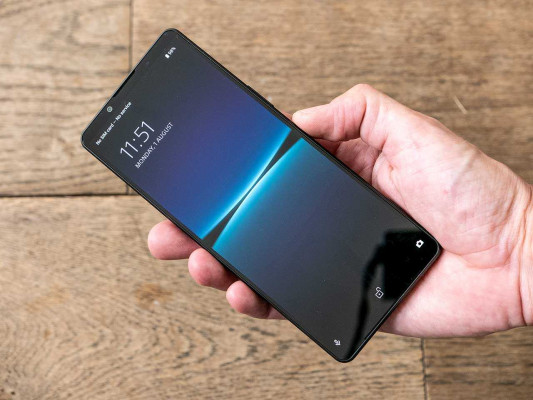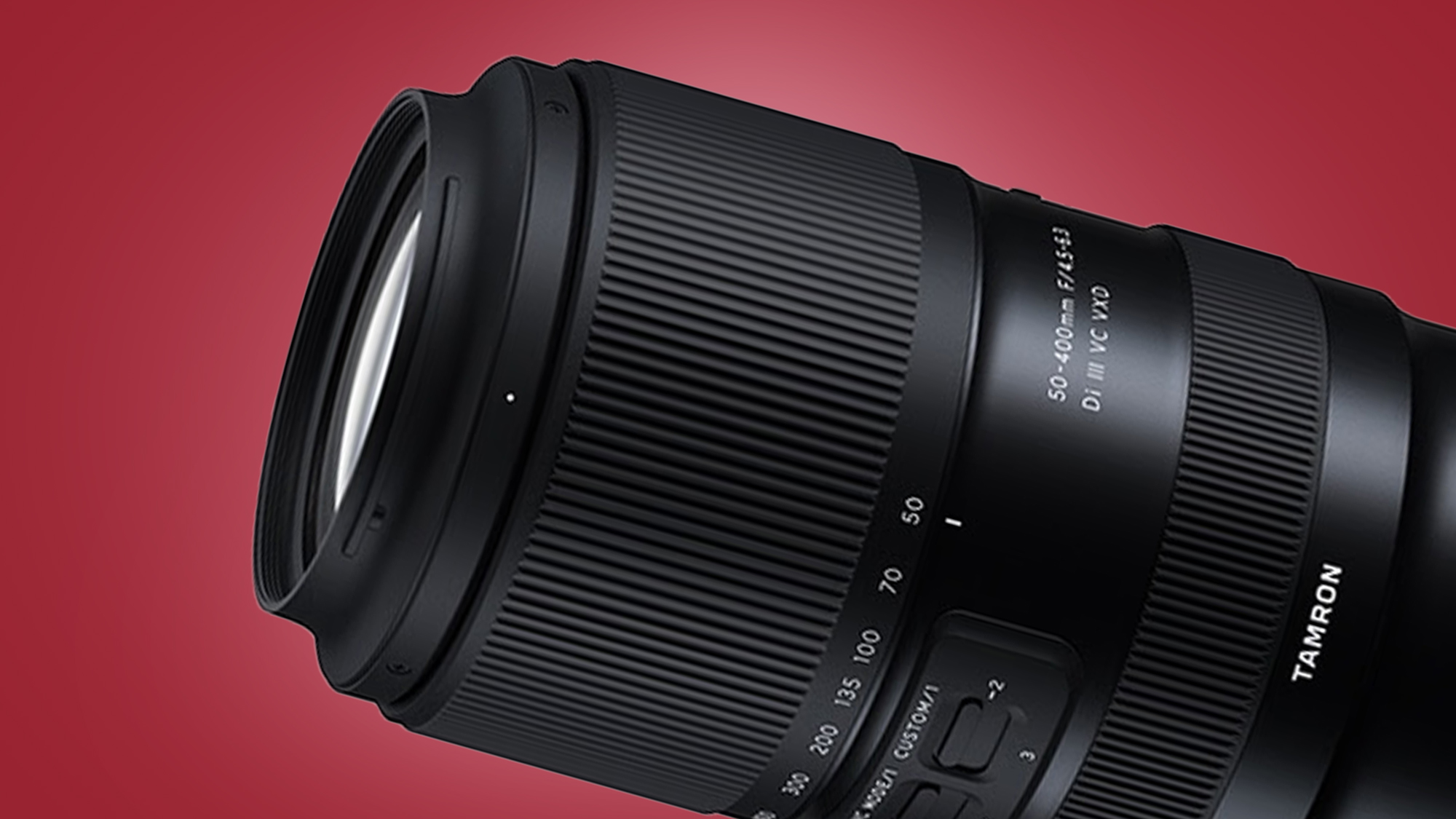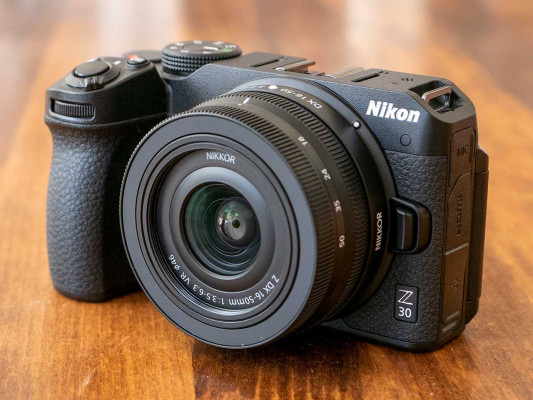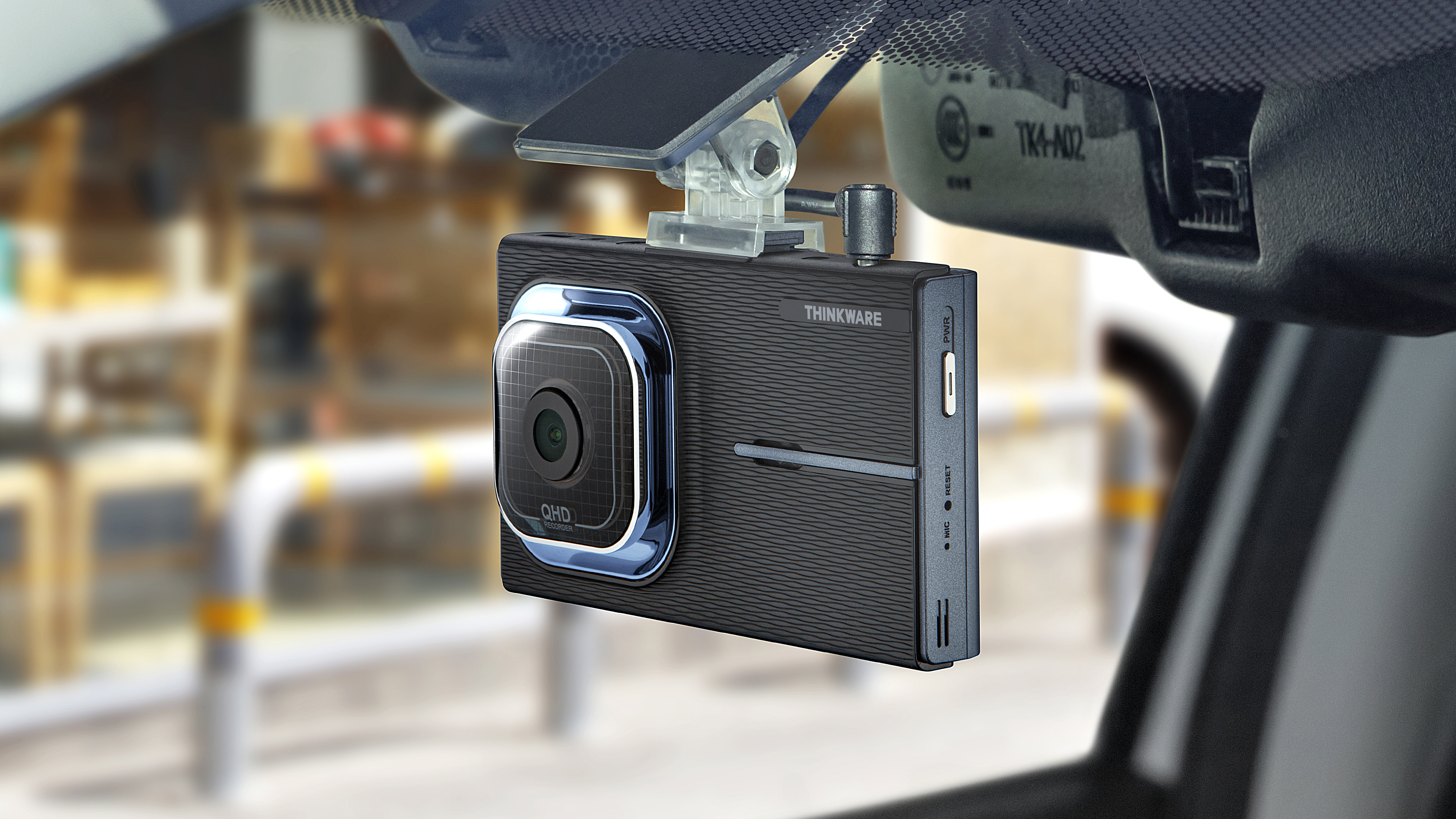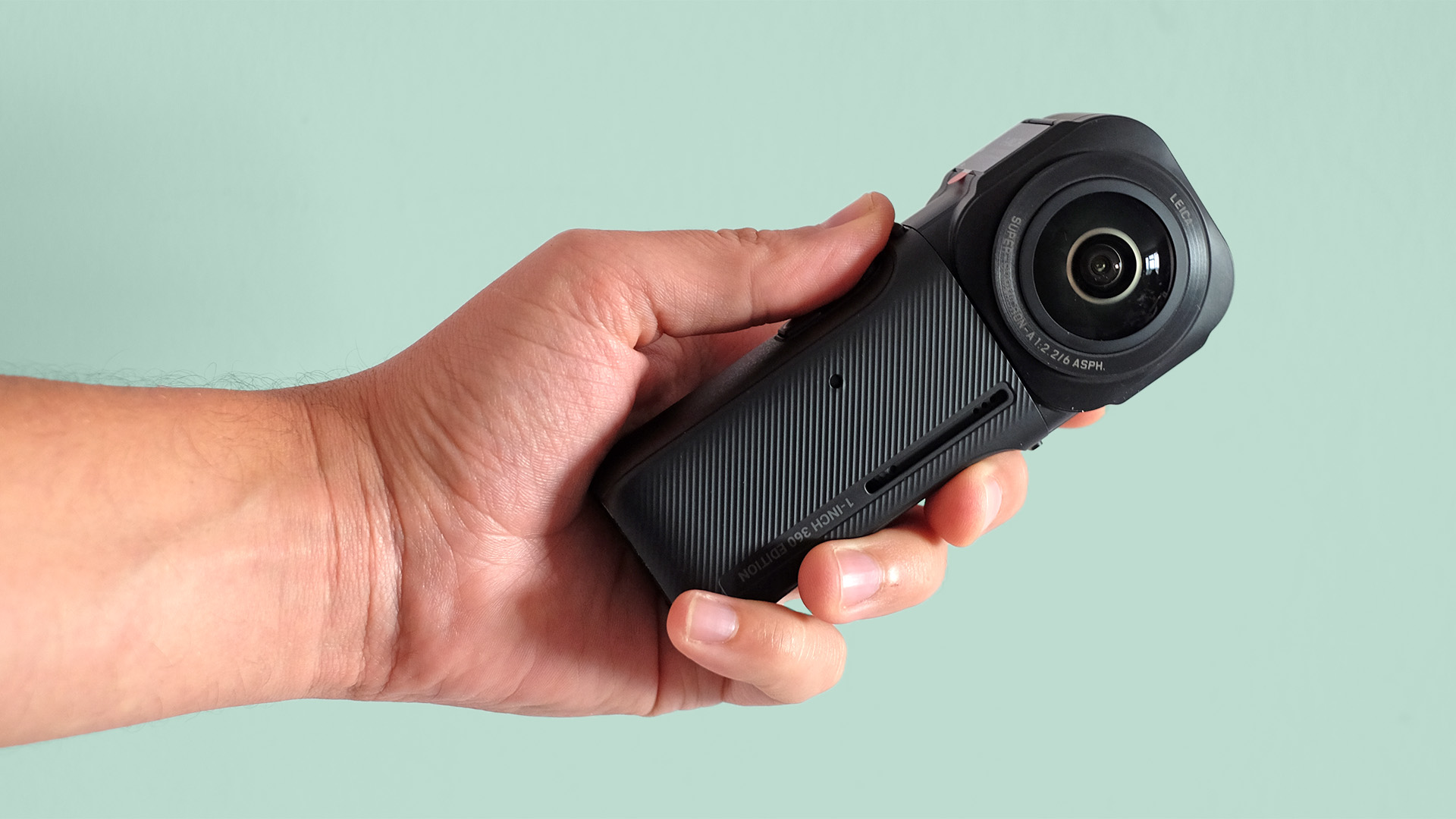Reviews

Autel Evo Lite drone review
DPReview Latest |
Autel's Evo Lite drones are comparable to DJI's Air 2S with their Type 1 (13.2 x 8.8mm) 20MP sensor cameras. Where the Lite+, the higher-end model in the Lite series, excels is its variable aperture and ability to capture up to 6K/30p video. The Evo Lite+ also has a slew of competitive software features, some of which might be more gimmicky than useful. Its included remote is approachable – perhaps to a fault.
The Lite+ is plenty maneuverable and can remain in the air for up to 40 minutes. That's a whopping 30% longer than the DJI Air 2S' 31-minute maximum runtime. The Lite+ starts at $1,549, and its premium bundle, which includes extra batteries and other accessories, will set you back $1,849 – far more than the Air 2S.
Is the Evo Lite+ a worthy alternative to DJI's Air 2S despite its premium price? Let's explore.
Jump to:
Aircraft| Photo and Video| Flight Modes | What it's like to fly | Conclusion | Samples
Key Features
- 20MP, Type 1 (13.2 x 8.8mm) CMOS sensor
- 29mm (equiv.) lens with 82º FOV and variable F2.8 – F11 aperture
- 6K/30p, 4K/60p and 1080p/120p video
- H.264 and H.265 recording at 120 Mbps
- 8-bit A-Log and HDR video capture
- 8-bit JPEG and 10-bit Raw image capture
- Digital zoom: 1X – 16X
- Lossless zoom: 4K: 1.3X; 1080p: 3X
- Skylink image transmission –12 km (12.5 mi) range
- Dynamic Track 2.1 subject tracking software
- SoundRecord to record ambient sounds from remote
- 40-minute flight time
- 835g (1.84 lbs) total weight
Compared to...
The Autel Evo Lite+ is a few steps above the DJI Air 2S when it comes to flight time and certain camera features. It falls below the standard Mavic 3 in terms of flight time, obstacle avoidance, camera sensor size, color profile and zoom capabilities.
| Autel Lite+ | DJI Air 2S | Mavic 3 (standard) | |
|---|---|---|---|
| Price |
$1549 (+$300 for Premium bundle) |
$999 (+$300 for FlyMore combo) | $2,049 (+$800 for Fly More combo) |
| Camera |
20MP, Type 1 (13.2 x 8.8mm) 29mm equiv. F2.8-F11 |
20MP, Type 1 (13.2 x 8.8mm) 22mm equiv. F2.8 (fixed) |
20MP, Four Thirds CMOS sensor 28mm equiv. F2.8-11 |
| Video transmission | Skylink, 12km, 2.7K/30p | OcuSync 3.0 (O3), 4 antennas, 12 km, 1080p | OcuSync 3.0 (O3), 4 antennas, 15 km, 1080/60p |
| Video resolution | 6K/30p, 4K/60p | 5.4K/30p, 4K/60p | 5.4K/30p, 4K/60p |
| Video bit-rate | 120 Mbps | 150 Mbps | 200 Mbps (H.264) / 140 Mbps (H.265) |
| Log video | 8-bit A-Log, HDR in Auto mode (Pro N/A) (8-bit) | 10-bit A-Log, HDR video (10-bit) | 10-bit A-Log, HDR video (10-bit) |
| Zoom |
Digital Zoom: 16X, Lossless: 4K, 1.3X 1080p, 3X |
1-4X digital zoom |
1-4X digital zoom |
| Obstacles | Stops before | Stops before and bypasses | Stops before and bypasses |
| Obstacle avoidance sensors | Forward, Backward, Downward | Forward, Backward, Downward, Upward | Forward, Backward, Downward, Upward, Left, and Right |
| Flight time | 40 minutes | 31 minutes | 46 minutes |
| Dimensions | 210×123×95 mm | 180×97×80 mm | 221×96×90 mm |
| Weight | 835g | 595g | 895g |
Although the Evo Lite+ headlines the ability to capture 6K/30p video, this is limited to 8-bit recording in both A-Log and HDR. Moreover, Pro Mode, which gives you control over numerous settings including Shutter Speed, Aperture, White Balance and ISO, currently cannot be activated when filming A-Log or HDR footage.
Another disappointment is that AEB, Burst, and Timed shots can also only be captured in Auto mode. I was hoping these shortcomings would be resolved with the latest V1.4.64 firmware update on August 9, but they weren't.
Both the Air 2S and Mavic 3 series offer DJI's Advanced Pilot Assistance System (APAS), which allows the drone to either stop in front of or bypass obstacles. The Autel Evo Lite+ will simply stop. If you're filming, you might appreciate it if your aircraft automatically maneuvers around dangerous impediments.
Both the Evo Nano and Lite series of drones use the Autel Sky app, which is greatly polished and cleaned up compared to their previous Explorer iteration. It includes SoundRecord, a feature that allows you to record ambient sounds from the ground with your smartphone. It will automatically apply this audio to the video that is saved on your phone, but unfortunately it won't be paired with the clip from your microSD card.
| What We Like | What We Don't |
|---|---|
|
|
Who's it for?
Given its starting price, some of its more advanced features, and especially its variable aperture lens, helpful when choosing a desired shutter speed for video, the Lite+ seems aimed at professional or prosumer fliers. Those looking for sharp and detailed imagery, especially at night, with either 6K/30p or 4K/60p resolution should look at this drone as an option, especially when more firmware updates are released.
 |
The Sky app contains features such as SkyPortrait (a background-blurring filter), which doesn't quite work as intended, and MovieMaster (an auto-editing system), which still feels underbaked, that are clearly aimed at consumers. However, I don't see someone buying this particular model to take on a vacation or to the pool to photograph friends – especially when the Air 2S also packs the same sized sensor, has more obstacle avoidance capabilities, and is more compact.
Furthermore, Autel firmware updates take about 15 minutes, while other competing models take around five. You need to rotate the drone in three different directions versus the typical two to properly calibrate the compass. These are things that would annoy an average consumer who simply wants to take some aerial shots without too much hassle.
The Lite+, if fully developed and brought up to a higher standard, could be a prosumer drone for someone who values privacy, doesn't want to deal with potential geofencing issues, and perhaps wants to save some money by not going all-in on a DJI Mavic 3 series drone. There is a market of die-hard Autel users that prefer this manufacturer to DJI. Most people, however, will not care as much about brand loyalty and want something that's easy to operate.
Aircraft and controller
At 210 x 123 x 95mm (8.27 x 4.84 x 3.66") folded down, the Lite+ has a frame that’s larger than the Air 2S and similar to the Mavic 3 series. What’s lacking here are any obstacle avoidance sensors on top of the drone, like the Air 2S, and on the sides. Autel says the Lite series 'uses ultrawide-angle cameras in the front to provide a 150º field of view.' Sensors can also be found on the back and bottom of the aircraft.
 |
| The bottom of the aircraft is equipped with sensors and an auxiliary light that is especially useful at night. |
There is a fill light on the bottom of the aircraft that comes in handy, located between some of the belly-mounted sensors. If the lower vision system and ultrasonic sensor determine that it is too dark, or the aircraft is in close proximity to the ground, the fill light will turn on automatically. The lamp can also be activated in the Sky app.
When I reviewed the Evo II, I was disappointed with the quality of the remote. It was awkward to hold and there were two misplaced buttons on the back that made it easy to trigger functions I didn't intend. But it did have an LED screen that allowed you to view pertinent flight information, meaning you could operate the aircraft without a smartphone, if desired.
While the Evo Lite+'s remote is lightweight and ergonomically-friendly, it has a few shortcomings. It lacks a screen, as well as a switch to toggle between flight speeds. You can toggle them in the app, but it's a better experience to have it readily available at the literal flip of a switch.
It would also be nice to be able to switch between Positioning (P) mode with GPS and ATTI mode via the remote, but there is no control for that. The remote also lacks any dedicated slots to store the joysticks if you unscrew them.
One final controller gripe: you need to fully turn the remote on to determine how much power is left. With DJI's remotes you simply need to tap the power button once to find out if you need to charge it or are ready to fly.
Photos and video
The camera on the Lite+ has a 20MP Type 1 (13.2 x 8.8mm) CMOS sensor, mounted on a 3-axis gimbal. This camera module has a 29mm (equiv.) variable F2.8 – F11 aperture lens with an 82º FOV. The Mavic 3 series also has a variable aperture lens, while the Air 2S' is a fixed F2.8.
 |
| Like the much bulkier Autel Evo II, the Lite+ boasts a 6K camera with variable aperture and a Type 1 (13.2 x 8.8mm) sensor. |
Autel introduced its subject-isolating SkyPortrait feature with the latest generation Nano and Lite drones. Depending on which mode you select, 'Close,' 'Medium' or 'Long,' the drone will position itself accordingly and the background will automatically be digitally blurred for a more professional-looking image.
I tried it out and it worked, to an extent. However, I don't think the image has quite the professional polish or depth of field that Autel envisioned when creating this feature. You can tell the background is ever so slightly blurred, but not enough to make the image more captivating. A small sensor behind a wide lens, no matter what the aperture or computer assist, will always be challenged to generate shallow depth of field.
 |
| The background is ever so slightly blurred in this SkyPortrait image, shot at a 'Medium' distance. |
The Lite+ allows you to record video at resolutions up to 6K/30p, 4K/60p and 1080p/120p at 120 Mbps in H.264 or H.265 codec. You can also zoom, digitally, up to 16X at 6K/30p. The Lite+ also has a 'lossless zoom' feature, up to 1.3X in 4K/30p and 3X in 1080p, though by cropping the sensor it inevitably comes with some noise/quality cost.
Presumably in a bid to compete with DJI's MasterShots, a feature that autogenerates a glossy montage from a series of different clips, Autel came up with MovieMaster. Unfortunately, it is not nearly as polished or user-friendly. Tedious is a better word to describe it.
MovieMaster is easy enough to access. You don't need to have the drone powered on or connected to the remote. You simply open the Autel Sky app and tap 'Album' in the bottom-left-hand corner to get started. From there, you can select the video clips and photos you took with your drone from your smartphone's library of images.
There are two modes for creating in MovieMaster: Theme and Manual.
 |
| Does anyone really want an entire movie with one effect such as Mirror World? Probably not. This is an example of an effect that should be limitable to a brief part of a video. |
The Theme mode offers 9 different custom templates including Mirror World, Wonderful World, Monument and Vertical, each of which is supposed to give your footage a distinctive look. The problem here is that it applies the chosen effect to all clips. You wouldn't want, for example, to watch an entire video of Mirror World clips. The ability to change effects within the same video, or not have any in certain clips, would be way more useful.
I tried out Vertical first and was required to upload 17 different clips before it would automatically generate a video for me. That's a lot of content. Even worse, it pre-selected the duration of each clip – 4.5 seconds, 4.1, 3.9, and so on. I can't figure out the reasoning behind this and the timings seem random.
When I generated a video using the Wonderful World template, I noticed that each selected clip started playing from the very beginning. There is no algorithm in place to decide which specific part of a clip might work best in each sequence. If these templates had more manual controls and flexibility, the output would be far better.
The Vertical template is sort of pointless as it takes your landscape orientation video clips and places them against a white background, which can't be customized. At least with an app such as InShot you can customize the background for a more dynamic look. Vertical might work well with the regular Lite drone, which has a 4-axis gimbal and can shoot in Portrait orientation. With the Lite+ and its 3-axis gimbal you can't, and it makes this particular MovieMaster theme a bit pointless.
Manual mode gives you more flexibility in how many video clips you are required to select. However, it will upload each clip in its entirety. I generated a 7+ minute movie from a selection of 10 clips, but I can't find a way to edit any of them separately to be shorter in length.
All in all, it feels like you're beta testing the Lite+ far too often.
2D effects such as Glitch, Shaking, and Ink Painting can be applied, along with 3D effects such as Panning and Reflection. However, these effects seem to appear at the end of each clip, even if I have the duration dial set to the maximum. Overall, using Manual mode on MovieMaster is a bit of a headache and I believe it's much easier to use a third-party movie editing app, of which hosts are available in any given marketplace, if you want to create a unique compilation of your work.
Another issue I have is with the 45 different filters MovieMaster gives you to place on your footage, most of which are unappealing in my opinion. Many of the filters either darken the footage, wash it out, or give it the type of blue undertones you would typically try to fix in post-processing.
 |
| If it's already not bad enough that 10-bit recording isn't available, you also can't record Log or HDR footage in Pro (Manual) settings. |
One major setback is the fact that the Lite+ only offers 8-bit Log capture. DJI's Air 2S and Mavic 3 series both offer 10-bit. Even more frustrating, Pro mode, which gives you Manual control of the camera, is not available when shooting in HDR or Log, which means to use those features you'll have to shoot in Auto.
Similarly, you cannot activate AEB shooting in Pro mode. By now, I thought these shortcomings would be resolved – but they haven't been as of this writing.
All in all, it feels like you're beta testing the Lite+ far too often.
The Autel Sky app and flight modes
Like the Nano series of drones, also released in January, the Lite+ is powered by the Sky app. Autel has cleaned up this latest iteration considerably and modernized it. Where the Autel Explorer app, which powered the original Evo and Evo II series, felt cluttered and overwhelming to use at times, the Sky app is cleaner and simpler to navigate.
Main menu items – including Photo, Video, and Night modes – have been moved to the side and read vertically. The layout reminds me of the DJI Mimo interface that powers products such as the OM 5. iPhone users will find the look familiar as well. An icon lets you toggle between photos and video, and a box will pop up and let you select, for example, which video resolution you want to record or if you want to shoot in AEB.
A control in the upper-left-hand corner lets you toggle between flight speeds, and an icon in the upper-right-hand corner leads you to more deep dive features like gimbal calibration, firmware updates, height plus distance limits, JPEG vs. Raw shooting, and so on.
The Lite+ contains a few more features than the Nano, and one area where Autel might be overdoing things is in the Night mode. The Lite series gives you up three different night modes: Standard, Night and Super Night. The latter lets you shoot video at up to 48,000 ISO, but limits you to shooting up to 4K/30p footage.
 |
| When you get into Night Mode, you'll see three different filters for enhancing footage in app. Personally, I think they clutter the app and are unnecessary - especially for this level of drone. |
These built-in presets provide color filters that not only are too similar but enhance an already unsightly effect common to nighttime footage with most drone models, namely an orange cast. Maybe it's a personal aesthetic, but I like to neutralize orange tones in my night clips. Some people I know purchase a blue graduated filter to automatically produce a more accurate color scheme straight out of the camera. Regardless, I think that Autel is offering up far too many choices in certain areas for specific features – a problem that plagued its Explorer app.
There are quite a few voice prompts that regularly pop up while using the app. You're even encouraged to turn the volume up every time you activate it to fly. Thankfully, with the latest firmware update, Autel gives you the option to switch off voice prompts, which makes the flying experience much more pleasant.
Autel is offering up far too many choices in certain areas for specific features.
Obstacle proximity is signaled by beeps that increase in frequency the closer you get to an object. The screen will turn yellow if you're less than 25 feet away and red if you come perilously close. As noted above, obstacle avoidance will prevent the drone from colliding with an object (as long as you're not flying in Ludicrous mode), but it doesn't give you the option to bypass it.
The app has a SoundRecord feature that uses your smartphone to record ambient sounds on the ground. Originally, Autel had planned to put a microphone on the remote, but this didn't make it to the final design. SoundRecord works well, and the soundtrack is decent quality audio. However, the track only shows up on video clips saved in the app or on your smartphone. The audio does not transfer to the video files on the microSD card in the drone.
The app provides four Intelligent Flight modes, accessed from the top right-hand side of the main navigation menu. With a single click of a button, the drone will automatically maneuver to create a professional-grade clip. Rocket, Fade Away, Orbit and Flick are the four available effects.
Dynamic Track is also available on the Lite+ in both Auto and Pro modes. After some extensive testing, it appears it can only track people, despite Autel's statement that it can also track cars and even animals (the latter would be a true selling point, since I've never seen this mentioned by companies other than Autel). I was delighted at how well the drone tracked my daughter, and how it relocated her immediately after she disappeared under a tree.
What's it like to fly?
In my review of Autel's Evo II drone, which has the same camera but weighs roughly 300g (0.66 lbs) more than the Lite+, I stated that it flew like a school bus. Thankfully, the same can't be said about the Lite+. The experience is much improved. The lighter weight and improvements in maneuverability show.
 |
| Because the Lite+ only captures 8-bit JPEG and Raw images, color banding can appear (look around the sun) in certain scenarios. |
Camera control was a little more troublesome. Perhaps because such a robust camera is mounted on an aircraft with a small frame, I found that when I rotated the camera up or down 90º it would catch for a second or two about halfway through. This prevents me from creating a smooth revealing shot, for example. The gimbal design on the Lite+ isn't as aerodynamic or sturdy as competing models, and it can feel less than nimble at times.
The drone is a bit noisier than competing models, including the Air 2S and Mavic 3. When I was flying at the park, I caught the attention of several people nearby. They gave me a look that said 'you're not flying that near me, are you?' The idea is to be inconspicuous when flying in areas with a few others nearby and this was not my experience.
The gimbal also had the tendency to shake uncontrollably at times after the aircraft launched. When I landed the aircraft and restarted it, the issue resolved. Still, it's not an ideal experience.
Most times when I fired the drone up, I was told I couldn't take off as the gimbal was 'self-checking.'
Also, a problem that plagued the Nano+ drone I reviewed was repeated here as well. Most times when I fired the drone up, I was told I couldn't take off as the gimbal was 'self-checking.' This also occurred when I landed and is an issue Autel needs to resolve.
As much as I don't want to admit this, when I was out flying at night last month, the drone suddenly fell into a tree in my neighbor's yard. One minute I was flying, and the next, the gimbal went haywire. I find it difficult to figure out why, as I've been flying it in all conditions for the past six months. Thankfully, no one was hurt and property wasn't damaged.
Odds and ends
Equipped with Autel's Skylink transmission system, the Lite+ can fly at a distance up to 12 km (7.5 mi) when free of obstacles or interference. It supports three frequencies, 2.4, 5.8 and 5.2GHz, to relay HD video. The Lite series of drones can remain airborne for up to 40 minutes, which is 9 minutes longer than the DJI Air 2S and 6 minutes less than the DJI Mavic 3. It can travel up to 68.4 km/h (42.5 mph) in Ludicrous mode.
The Lite+ supports memory cards up to 256GB with a mandatory UHS-3 rating and also has 6GB of onboard internal storage, should you forget a card or run out of space. Autel does not have a system such as DJI's ADS-B that notifies you when manned aircraft are nearby.
Other benefits of purchasing an Autel drone have to do with privacy, since pilots don't need to create an account to fly. You can simply take off without having to register on the app.
A year ago, Autel introduced a No-Fly Zone geofencing database. While it will inform you if you're operating in a restricted area, it won't ground the drone. DJI, on the other hand, will prevent pilots from taking off in certain areas unless prior approval is obtained. At times, even with approval, their drones will stay grounded. It's happened to me.
Final thoughts
The drone market desperately needs competition to the dominant DJI, and Autel has positioned itself as one of the top contenders. That said, the fact that the Lite+ was released in January and it is already August, without any significant firmware updates to address the shortcomings with the camera profile or other bugs, is disappointing.
Autel needs to focus on bringing this drone up to the standard – yes, as set by DJI – with ongoing firmware improvements and better overall stability. If you can't fully utilize Pro mode, or apply Manual settings for photos, video and hyperlapse clips, the drone is not useful for a professional remote pilot. Also, without the ability to record 10-bit Log footage, it's tough to justify the price when the Air 2S retails for much less and offers it.
As it stands, the Lite+ has the potential to be a decent option for someone who wants high-quality imagery and may not be a fan of DJI. Shoppers may prefer this model's variable aperture, which the Air 2S doesn't offer, especially if their budget falls below the Mavic 3's introductory price.
However, as mentioned earlier, one feels like a beta tester when operating this drone. We expect a better experience for such a high price.
Sample gallery
Please do not reproduce any of these images without prior permission (see our copyright page).








